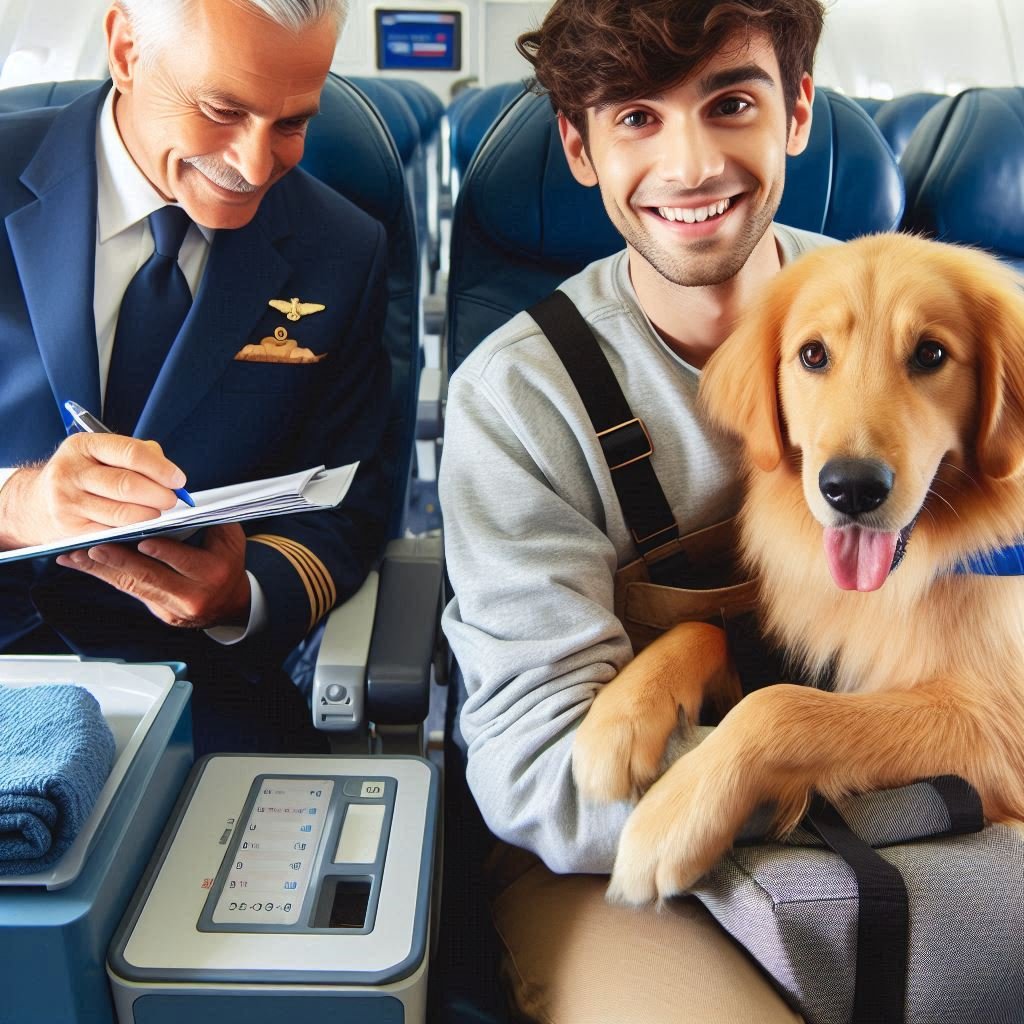Planning to take your furry friend along on your Delta Airlines flight? It’s totally possible, but it’s important to follow a few specific steps to make sure your pet can fly safely and comfortably. Delta allows pets to travel either in the cabin, as cargo, or as checked baggage, depending on the size and type of animal. In this guide, we’ll break down the step-by-step process to add a pet to your Delta flight and cover everything you need to know.
1. Know Delta’s Pet Travel Policy
Before you start booking, it’s essential to understand Delta’s pet policy. Different types of animals, travel distances, and flight classes can affect how your pet can travel with you.
Types of Pet Travel on Delta:
- In-Cabin Pets: Small pets like dogs, cats, and household birds can travel with you in the cabin on most domestic and international flights, provided they fit comfortably in an airline-approved pet carrier that fits under the seat in front of you.
- Delta Cargo: For larger pets or those that can’t be accommodated in the cabin, Delta Cargo offers transport for pets as checked cargo, a service designed for animals that need to travel separately from their owner.
- Service and Emotional Support Animals: Delta has very specific guidelines for service animals, including restrictions for emotional support animals since 2021. Emotional support animals are no longer considered service animals, and they must now follow the same rules as pets in the cabin.
2. Check Pet Eligibility: Is Your Pet Eligible to Fly?
Before adding a pet to your flight, check if your animal is eligible under Delta’s guidelines.
General Eligibility for In-Cabin Travel:
- Pet size: Your pet must fit comfortably in a pet carrier, which goes under the seat in front of you.
- Age: Puppies and kittens must be at least 10 weeks old for domestic flights and at least 16 weeks old for international travel.
- Health certificate: You might need a health certificate depending on the destination (especially for international flights). Check local regulations or ask your vet for advice.
Restrictions:
- Destination Restrictions: Some countries or U.S. states (like Hawaii) have specific quarantine or pet travel restrictions. Double-check if pets are allowed at your destination.
- Airplane restrictions: Some Delta planes, like the Boeing 767, do not allow pets in the cabin. Make sure to check which type of aircraft you’ll be flying on.
3. Contact Delta to Reserve Your Pet’s Spot
Once you’ve confirmed your pet meets Delta’s travel requirements, the next step is to reserve your pet’s spot on the flight. Pet reservations are made on a first-come, first-served basis, so you should call Delta Reservations as soon as possible after booking your ticket.
How to Add Your Pet to Your Delta Flight:
- Book your flight: First, book your flight through Delta’s website or app. You cannot reserve a pet’s spot online, but you’ll need to know your flight information before contacting customer service.
- Call Delta Reservations: Contact Delta’s pet reservations department at 1-800-221-1212. Let the representative know you’d like to add a pet to your flight. You’ll need to provide your flight details, pet’s information, and payment information.
- Pay the pet travel fee: For in-cabin pets, Delta charges a pet fee per flight segment. As of 2024, the fees are:
- $95 USD for domestic flights, including Puerto Rico
- $125 USD for international flights and flights to/from the U.S. Virgin Islands and outside the U.S.
- $200 USD for flights to/from Brazil
- Confirm your pet’s reservation: After your pet’s travel is confirmed, you’ll receive details about any necessary documentation or further instructions.
Pro Tip: Pet reservations are limited to one pet per customer and a total of 2-4 pets per flight, depending on the aircraft, so don’t wait too long to secure your pet’s spot!
4. Prepare Your Pet for Travel
Now that your pet’s reservation is confirmed, it’s time to get ready for the trip! There are several steps you’ll need to take to ensure your pet meets Delta’s requirements.
Get the Right Carrier:
- Size: For in-cabin travel, your pet must be able to fit comfortably in a carrier that can slide under the seat in front of you. For most Delta flights, this means a carrier with maximum dimensions of:
- 18″ x 11″ x 11″ (for soft-sided carriers) or
- 17.5″ x 12″ x 7.5″ (for hard-sided carriers).
- Carrier Type: The carrier must be ventilated, leak-proof, and allow your pet enough room to turn around and lie down comfortably. Soft-sided carriers are recommended as they fit more easily under airplane seats.
Pack Essentials for Your Pet:
- Food and water: Bring enough food for the journey, but avoid feeding your pet too much before the flight to reduce the risk of accidents.
- ID tags: Make sure your pet has a collar with identification in case of emergency.
- Absorbent pads: For in-cabin pets, placing absorbent pads at the bottom of the carrier can help with any accidents during the flight.
Health and Documentation:
- If you’re flying internationally or to places with specific pet regulations (like Hawaii), make sure your pet has all the required vaccinations, and check if a health certificate is needed. It’s always a good idea to have your vet perform a check-up before your trip.
5. Arrival at the Airport: What to Expect
On the day of your flight, arrive at the airport early, as you’ll need some extra time to check in your pet.
At the Check-In Counter:
- Check-in with your pet at the Delta counter, not at the self-service kiosks. You’ll need to show proof of your pet’s reservation and, if applicable, health certificates.
- Security screening: At security, you’ll be required to take your pet out of the carrier and carry them through the metal detector while the carrier is X-rayed.
6. Onboard: Flying with Your Pet in the Cabin
Once you’re onboard, place your pet’s carrier under the seat in front of you. For the duration of the flight, your pet must remain in the carrier and under the seat. Keep in mind that Delta does not allow pets to sit on your lap during the flight.
Tips for a Comfortable Flight:
- Stay calm: Pets are very sensitive to their owner’s emotions. If you stay calm, your pet is more likely to stay calm as well.
- Bathroom breaks: Since your pet has to stay in the carrier for the entire flight, make sure to give them a potty break before heading to the airport.
7. After Landing: Exiting the Plane with Your Pet
Once you’ve arrived at your destination, retrieve your pet’s carrier from under the seat. Head directly to the nearest designated pet relief area if your airport has one, so your pet can stretch their legs and relieve themselves after the flight.
Additional Tips for Flying with a Pet on Delta
- Consider the weather: Delta limits pet travel when temperatures are too hot or too cold, especially for animals traveling as cargo. Make sure to check the weather conditions for your departure and arrival locations.
- Pet Travel Ban During Extreme Weather: Delta Cargo may restrict pet travel during extreme weather conditions (below 20°F or above 80°F), so plan accordingly if your pet is flying in the cargo hold.
- Holiday travel: During peak holiday seasons, pets may be restricted from traveling in the cargo hold, so always plan ahead.
Conclusion: Preparing Your Pet for a Delta Flight
Bringing a pet along on your Delta flight requires careful planning, but by following the steps in this guide, you’ll ensure that both you and your pet have a safe and comfortable journey. Remember to check your pet’s eligibility, reserve their spot early, and prepare all necessary documentation to avoid any hiccups on the day of your flight. Safe travels, and don’t forget to pack some treats for your furry co-pilot!


